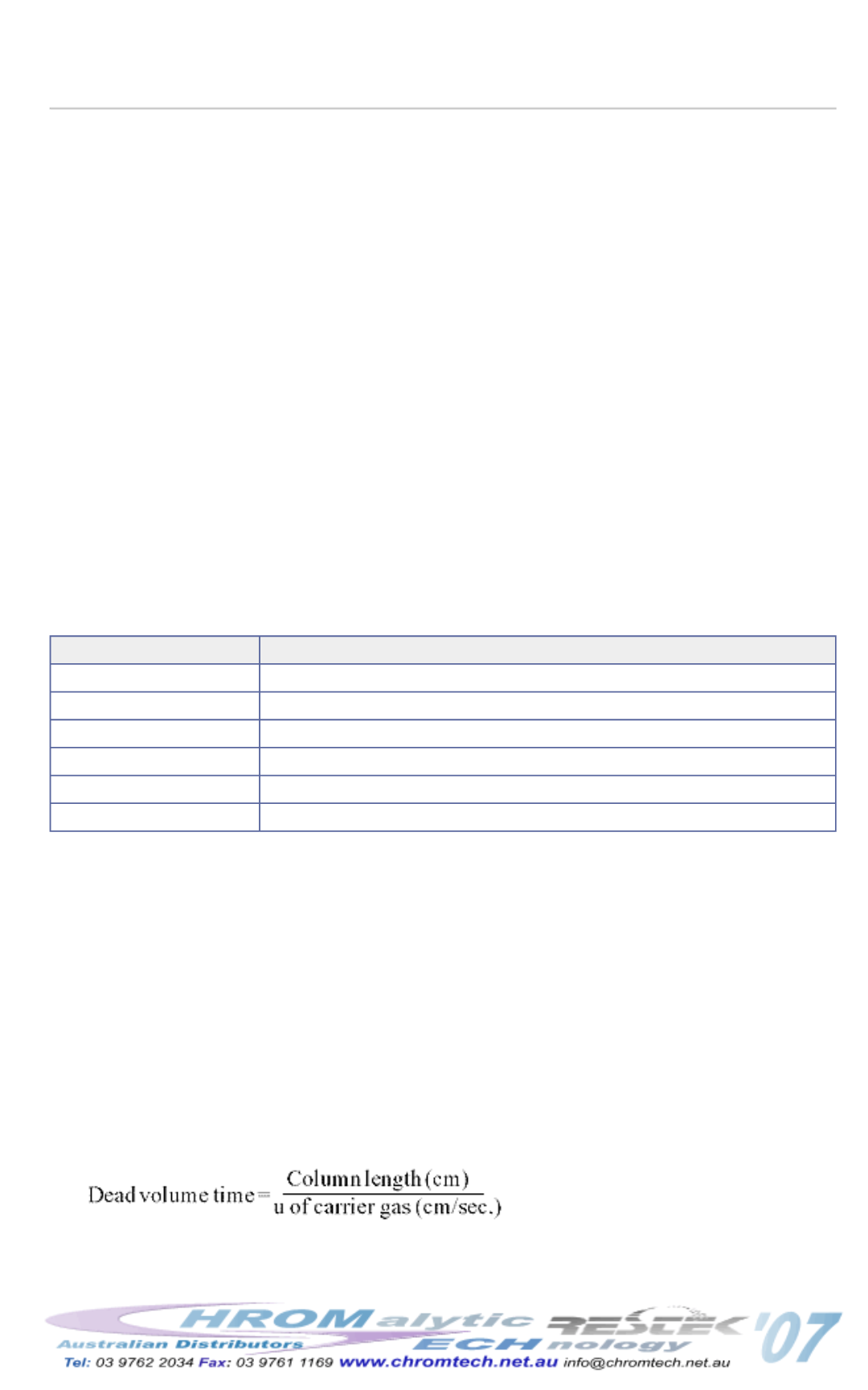
RestekCapillaryColumn InstallationGuide, Section II
column.
* Spraying argon gas andmonitoring for Mass 39 is also effective for mass spectrometers.
III. SettingOptimum FlowRates
Themost accurate and reproducibleway to set the capillary column flow is by injecting
a non-retained substance (see table IV) to determine the linear velocity (dead volume
time) and adjusting the head pressure until the linear velocity is at its optimum value.
Measuring the flow rate at the column outlet is not recommended because it does not
account for column-to-column variations. Relying on head-pressure readings is not
recommended due to instrument and column variations. Exact flow rate values for a
particular column can only be determined after the linear velocity is set at its optimum
value.
Becausemost capillary columns are operated in a pressure (not flow) controlledmode,
the temperature at which the linear velocity is set is critical. To obtain the optimum
performance, linear velocity should always be set at the operating temperature for an
isothermal analysis. For a temperature-programmed analysis, the column's linear
velocity should be optimized at an oven temperaturewhere a hard to separate peak
pair elutes. If there are no critical peak pairs, raise the oven temperature to the
temperature reachedmidway through the programmed run. Always document which
non-retained compoundwas used and the temperature at which the linear velocitywas
set in order to easily reproduce the analysis.
To set dead time, inject 2.0µl of a non-retained substance that is compatiblewith the
detector (
Table IV
). Accuratelymark the injection starting time and peak elution time
with an electronic integrator.
Table IV
Detector Type
RecommendedDeadVolumeCompound
FID/TCD
CH
4
NPD
acetonitrile vapors
ECD
methylene chloride vapors or air
ELCD
dichlorodifluoromethane vapors
MS
O
2
or N
2
(air)
PID
ethylene or acetylene
The compounds listed abovemay be slightly retained on thick film phases (1.0 to
7.0µm) giving erroneous dead volume times. However, they are reproducible for similar
column types on subsequent analyses.
Adjust the column head pressure until the correct dead time is obtained for the
appropriate column length and carrier gas (
TableV
). Once the dead volume time has
been finalized, check the split vent and septa purge flow tomake sure they did not
change significantly. (Head pressure regulated capillary systems require adjustment of
the split vent flow if the pressure changed significantly. Back pressure regulated
capillary systems should not require adjustment.)
The values in
TableV
were obtained using the formula for average linear velocity (u).
The optimum u is 40cm/sec. for hydrogen, 20cm/sec. for helium, and 12cm/sec. for
nitrogen*. Insert the appropriate values in the equation below to obtain the required
dead volume time for column lengths not listed.
TableVDeadVolume Times (for commonly used capillary columns)


